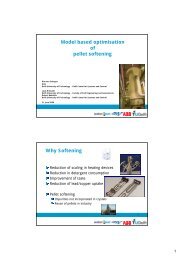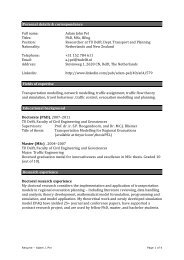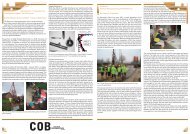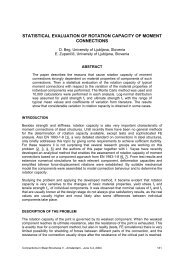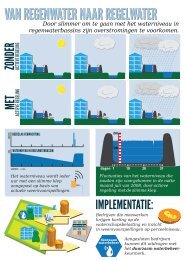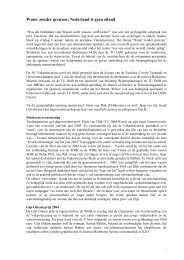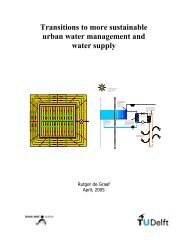Structural Design of Pavements PART VI Structural ... - TU Delft
Structural Design of Pavements PART VI Structural ... - TU Delft
Structural Design of Pavements PART VI Structural ... - TU Delft
You also want an ePaper? Increase the reach of your titles
YUMPU automatically turns print PDFs into web optimized ePapers that Google loves.
29<br />
deflections. Normally the analysis is stopped when the difference between the measured and<br />
calculated deflections is 2%.<br />
As has been mentioned before, the iterative back calculation procedure can either be an<br />
“automatic” or a “hand operated” one. In the “automatic” procedures the computer program<br />
automatically performs the iterations while in the “hand operated procedure” it is the<br />
experienced engineer who controls the iteration process. Both procedures have their<br />
advantages. The automatic procedure is fast but might sometimes result in “funny” results. By<br />
“funny” it is meant that the set <strong>of</strong> moduli that is back calculated results in a good fit between<br />
the measured and calculated deflections but the moduli value themselves cannot be true<br />
given the type and condition <strong>of</strong> the materials in the pavement, given the temperature<br />
conditions etc.. Such results can occur because the back calculation procedure doesn’t<br />
necessarily result in a unique answer. In such cases the hand operated procedure is more<br />
powerful because the experienced engineer can adjust the moduli values to such levels which<br />
are reasonable for the type and condition <strong>of</strong> the pavement materials present and still result in<br />
a good fit between measured and calculated deflections.<br />
Problems with back calculating layer moduli can occur when the top layer is thin (< 60 mm) or<br />
when the base layer has a higher stiffness than the top layer.<br />
A golden rule in the back calculation analyses is that one never must vary the moduli values<br />
<strong>of</strong> all layers in the same time. This should be done in a step by step procedure. First <strong>of</strong> all one<br />
should try to find a modulus value for the subgrade by finding a good fit between the<br />
deflections measured and calculated at the largest distance to the load centre (see also figure<br />
14). Then one tries to fit the deflections at intermediate distance from the load centre; this will<br />
result in the moduli for the sub-base and base. Finally one should fit the deflections at the<br />
shortest distance to the load centre and the maximum deflection; this results in the modulus<br />
for the top layer.<br />
Furthermore one should realise that a good fit <strong>of</strong> the measured SCI is <strong>of</strong> great importance<br />
since this value gives a lot <strong>of</strong> information on the strain levels in the pavement. Sometimes the<br />
measured deflection pr<strong>of</strong>iles are not easy to match. In such cases one should notice that a<br />
good match <strong>of</strong> the SCI is to be preferred over a good match <strong>of</strong> the deflections measured at a<br />
greater distance from the load centre.<br />
6.3 Example:<br />
The example that will be given here is taken from the OECD FORCE test pavements that<br />
were built at the LCPC test facilities in Nantes, France. These pavements were tested by<br />
means <strong>of</strong> the accelerated load testing device <strong>of</strong> the LCPC. The aim <strong>of</strong> the project was to<br />
study pavement response and performance <strong>of</strong> three types <strong>of</strong> pavements under accelerated<br />
loading. The results <strong>of</strong> the FWD data evaluation <strong>of</strong> two test pavements are discussed here [3,<br />
4].<br />
Figure 16 shows the two pavement sections analysed.<br />
I<br />
II<br />
60 mm asphalt<br />
120 mm asphalt<br />
300 mm base<br />
300 mm base<br />
subgrade<br />
Figure 16: Structures I and II <strong>of</strong> OECD’s FORCE project.



